Nauvoo — Start of Sea Bright
Birth of a beachtown …
It was first called “Nauvoo.” The area’s original settlers — Nathan Woolley, William Giles, and Johnty Smith — probably arrived in the coastal area about 1839, according to a Long Branch Daily Record story.
The name Nauvoo (Hebrew for “pleasant place”) was bestowed on Sea Bright by Mormon founder Joseph Smith during his missionary trip to the Monmouth County area in January 1840, according to local author-historian George Moss. At that time the barrier-beach section of the north Jersey Shore included just “three huts,” was covered in “cedars and bayberry bushes,” and all roads were “mere beds of sand.” The population included about 50 men and boys.
Beginning as a quaint and quiet fishing village — made up of a cluster of crude seaside huts — by the end of the 19th century Nauvoo was “the largest fishery on the coast.” The spot was favored for its proximity to the Shrewbsury Rock, a famous fishing grounds, and for its “easy slope of sand” allowing for better boat launching.
Writer Gustav Kobbe in his majestic 1889 book, The Jersey Coast and Pines, called these coastal fishing communities “the only ones of their kind” in the country. According to Kobbe, area fishermen would catch 9 million pounds of fish during an average 150-day season. In the late 1880s, fish sold for about 3 cents per pound. “Bluefish, bass, weakfish, blackfish are caught in plenty … these with crabs and clams abounding in the waters make seafood abundant and cheap,” wrote Kobbe.
Nauvoo residents considered themselves: “clam-diggers, rough, hard-bitten professional fishermen with Norwegian backgrounds,” according to a June 1957 Red Bank Register retrospective on the early settlement.
“In silence and patience, the wisdom of fishing unfolds.”
—Julian Barnes
The Seaman Sea Skiff, one of the most famous boats in maritime history, was the craft of choice back then. All started by Nauvoo boat-builder Isaac Seaman back in 1841. The boats — with near flat bottoms for better movement through surf and sand — were framed in applewood and later oak.
Both Sea Bright and Monmouth Beach were part of “Wardell’s Beach” — named for original owner Eliakim Wardell — going back to 1668. He had acquired the land (about 454 acres) from the Lenape tribe for the equivalent of 4 pounds (about 11 cents per acre). Payment was in blankets, clothing and hardware for all land north of Long Branch, below Sandy Hook, and between the Shrewsbury River and Atlantic Ocean.
By October 1865, Dr. Arthur V. Conover had acquired all of what is now Sea Bright and Monmouth Beach for $30,000. The Freehold physician bought from the heirs of Major Henry Wardell, the great-great grandson of the area’s first settler.
In June 1869, Mifflin Paul paid $5,300 to Dr. Conover to buy most of the Sea Bright acreage. At that time, Sea Bright was “an undeveloped strip of sand” and not a single real house existed. The Paul acquisition, along with the opening of a shore railroad line and a new bridge to Rumson, brought major development to Sea Bright. By March 1889, Sea Bright (then a section of Ocean Township) voted to incorporate itself, but it wasn’t until April 1896 that Sea Bright became an official, independent borough.
Plus: Monmouth Beach fishermen in “Galilee” — HERE

“Fishing village of Nauvoo.” Harper’s Weekly, August 1868. Hartshorne Woods — one of the highest elevations along the Atlantic Coast — is unmistakable in the background.
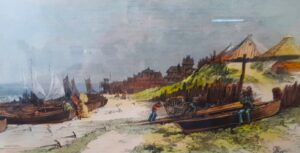
Nauvoo fishing village in front and the beginnings of seashore mansions at Sea Bright and Monmouth Beach rising in the background, 1883. From a tiny fishing village to a top shore summer resort in a flash.

“Carrying the Boat at Sea Bright” (1888) by Louis Comfort Tiffany. By the late-1880s the Nauvoo community included 250 fishing boats in the summertime.

Sea Bright fishermen struggle to get a pound boat ashore, 1906. The massive wooden crafts weighted a quarter-ton.


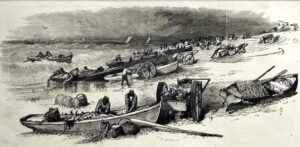





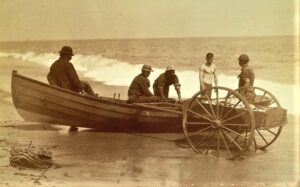











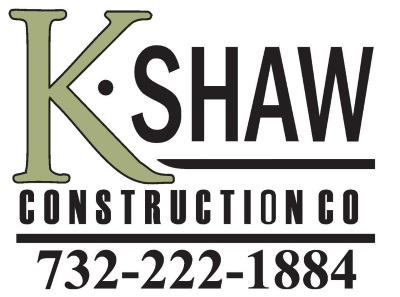
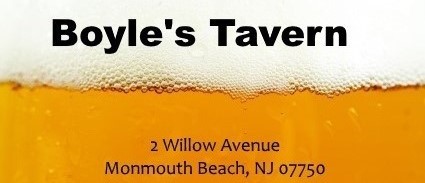
In a nutshell — my understanding is that the Seaman’s Sea Skiff is an evolution of the famous “Sea Bright Skiff.” I worked for Charles Hankins in Lavalette. I have raced beach skiffs for 20 years as a Sandy Hook lifeguard and built a number my own Sea Bright-style skiffs over the years. Thanks for the article — just trying to keep the record straight!